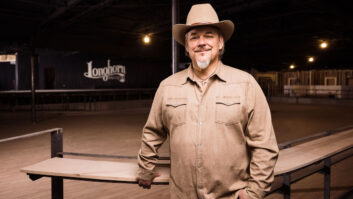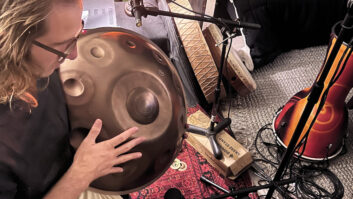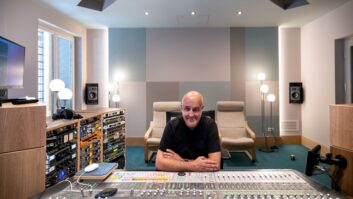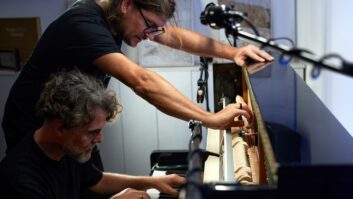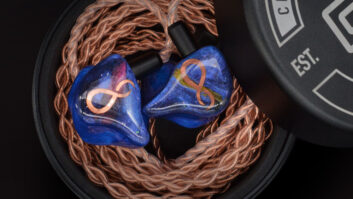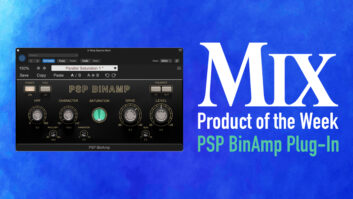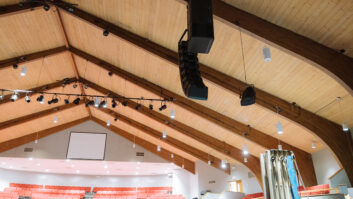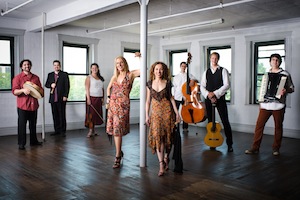
Everything old is new again, and that includes traditional Italian folk music, which is being brilliantly revived by an octet called Newpoli, made up of former Berklee College of Music and New England Conservatory students, most of them (but not all) Italians. The group’s third album, Tempo Antico, comes out September 26, and it’s a spirited and eclectic mix of southern Italian folk styles, some dating back several centuries, played entirely on acoustic instruments.
The album was recorded at the high-ceilinged Unitarian Universalist Church of Greater Lynn, in Swampscott, Mass. (north of Boston), by engineer Christian Kaufmann. Songs were cut live, including vocals, with no baffling between instruments. His main mic array consisted of an OTRF pair of DPA 4011s, flanked by a spaced pair of DPA 4006-TLs. For room mics, he had a spaced pair of Crown PZM-31S’s on the floor facing upward, about two-thirds of the way back, roughly 20 feet apart. Among the many spot mics were a pair of Neumann KMS 105s on the singers, DPA 4099s and 4061s on stringed instruments, and a Royer R-121 on bass. “Eighty to 90 percent of the sound comes from the main mics/room mics,” Kaufmann says, “except for the vocals. The band was set up on a raised section behind the altar in a close semi-circle behind the mic array. Just the vocalists were set up on the other side facing the band. Since we wanted the main stereo mics to do most of the heavy lifting, directionality, as well as differences in volume, was our main focus. Each song needed careful placement and orientation of the instruments to ensure a good balance on the recording.”

